J&J Staff attended the International Society of Managing and Technical Editors (ISMTE) conference July 31 through August 2. Our employees share what they liked best about the conference below.

Heather Blasco
My two favorite sessions were The Un-RFP: An Alternative Approach to Platform Selection and the Innovation Session.
In the session The Un-RFP: An Alternative Approach to Platform Selection by Allison Belan of Duke University Press, she described the process her team went through to select a new hosting platform for the publisher’s books and journals. She described how the process they underwent—which did not follow the traditional RFP (or “Request For Proposal”) model often seen when publishers/societies are looking for a new service like this—enabled them to focus more on their unique needs and to better engage with the potential providers. I thought many of the steps they took and processes they focused on could be applicable in a variety of business situations. I really liked this session as it was an atypical focus for the conference. It wasn’t specifically about our work in scholarly publishing but more about a general business practice that is applicable to what we do.
The Innovation Session had four presenters describing new services their companies were offering or developing, and it was up to the audience to vote on which was the most innovative. They included Research Square’s preprint platform; UNSILO’s manuscript evaluation AI that can be used within submission systems to improve the technical check process done by journals, and LetPub, which is a professional service that provides video summaries of scientific articles. My favorite—and the audience winner—was Scite, a platform that enables users to enter citations and find out if the scientific claims in the study have been refuted, duplicated, or mentioned by other studies. It is still in beta testing, I believe, but seems like an innovative tool that would be useful for scientists and laypeople to better understand a scientific study’s importance and contribution to the field.
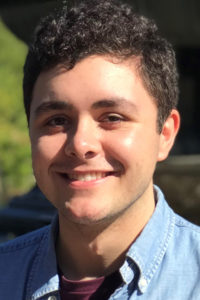
Logan Wagner
My key takeaways:
- Open science and Plan S are the future of the scholarly publishing field, and we should watch for the effects of those programs and policies in our work.
- As technology advances and the world changes, the industry will change as well, which we have seen with the use of blockchain among different publishers and systems.
- Publishing models are adapting to the evolving scholarly landscape, while institutions begin to make the industry determine what path to take. Preprints and the possibility of submission fees open the floor to questions of publication and how smaller publishers can handle the weight of giants like Wiley, Oxford, and PLOS.
My favorite sessions were the Plan S plenary session with Rick Anderson and Micah Vandegrift and the Coalition for Diversity and Inclusion in Scholarly Communications (C4DISC) breakout session with Melanie Dolechek.
Plan S will certainly affect the worldwide publishing ecosystem, and it’s only a matter of time until the US seriously considers adoption of such policies. I wasn’t aware of much of what Plan S says, and this session definitely gave me some insight into what is down the road for us. The debate format of the session created an engaging atmosphere for everyone, especially those of us with limited knowledge going into it. I appreciated Rick and Micah’s dialogue and will definitely explore the topic more on my own.
C4DISC provides a framework for understanding how to promote diversity and inclusion in the workplace, yet a lack of transparency within the industry seems to obfuscate just how diverse and inclusive we may or may not be. C4DISC is an excellent starting point for organizations to grow and advance, and we should take the initiative to implement programs that promote this type of progress.
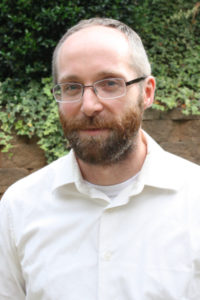
Phil Jackson
At a macro level, my biggest takeaway from the ISMTE conference is that the movement toward openness—e.g., open access, open peer review, financial transparency in publishing, etc.—continues to gain momentum. Openness is coming, more and more. But openness does not come without costs, and so different stakeholders in different ways resist the push for greater openness. Working effectively in this environment requires understanding what opportunities and threats openness poses to various stakeholders and figuring out how logics of appropriateness (e.g., socialization, norm development) and consequences (e.g., incentive structures, law/policy) operate in different contexts.
At a micro level, the importance of networking was reinforced. It was clear that people were at the conference as much to connect with fellow professionals as they were to attend the sessions, and in light of a point made by one of the presenters that “weak networks” are essential to our professional development, it makes total sense why that would be.
My favorite sessions included the plenary on Open science by Brian Nosek, which helped me think about the gap between prescriptive and descriptive accounts of professional scientific practice; Lindsay Morton and Jason Roberts’s presentation on open peer review; and last but nothing like least, Lauren Bragg and Kaki Mitchell’s very clear and practical session on critical thinking/problem-solving.
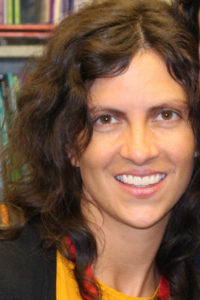
Stephanie Boyter
Last week’s ISMTE conference was extremely helpful in giving me a better informed and broader perspective of our field. Even though I may not understand all the particulars, I now have a much better sense of what we talk about when we talk about Plan S and open access, open peer review, preprint, and blockchain. Here are some of my other highlights and key takeaways:
Mingling and chatting:
I met a woman in line and we ended up in the same roundtable group in one of the breakout sessions; it was fun to swap perspectives on publishing life (she was from a scholarly society in Canada); I also met the Sheridan representative who was going to be visiting our offices later in the day.
Sessions and speakers:
- Learning about innovative ideas in scholarly publishing in one of the breakout sessions, in which a “people’s choice award” was given to the most exciting innovative idea (such as “Scite,” a plug-in developed by a former academic that allows users to see how often a particular work has been refuted, corroborated, or mentioned).
- The breakout session by an Editorial Manager representative of next-version changes/updates (such as being able to edit companion file names directly rather than having to download and reupload).
- The plenary session discussion about Plan S/Coalition S and the keynote speaker, who discussed creative ways to make science more reproducible and transparent through changing norms and incentives
Things learned or ideas inspired:
- Most funders (reportedly) favor preprint; many say industry is moving that way.
- Project management tip: Keep an “ideas list” so no idea gets lost (have a committee review it weekly)
- Approach protocol documents more systematically through regular review and revision.
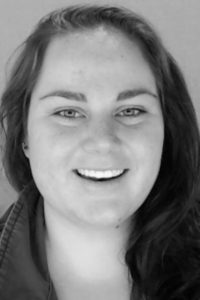
Erin Valentine
The ISMTE conference offered A LOT of new information and was incredibly interesting to attend as someone starting off their career in scholarly publishing. A few key takeaways for me were that publishing is constantly evolving and improving, which is sometimes exciting and sometimes a little nerve wracking. The debate session on Plan S showed this as two people with opposing views on Plan S (because if they agreed it would have been boring) discussed the multileveled pros and cons. Another great session that talked about improving publishing was the Innovation session with a couple visiting vendors. This was especially interesting, as AI was heavily discussed as a way to streamline the process so that editors are left with more time to be creative in their industry.

Barbara Anne Thomas
In the keynote address, Professor Brian Nosek offered multiple solutions to incite change and credibility in the future of scholarly publishing. I found his perspective interesting, and he touched upon a variety of issues within the publishing industry and called upon the collective action of funders, publishers, universities, societies, and researchers to work towards a more transparent open science framework. Additionally, I gained a lot of information about open peer review in the breakout session by Jason Roberts and Lindsay Morton, who discussed the direction of this new model and the pros and cons of publishing peer review history. This information was especially relevant to the production division, as we are just beginning to see the initial effects of published peer review history in the PLOS ONE journal.
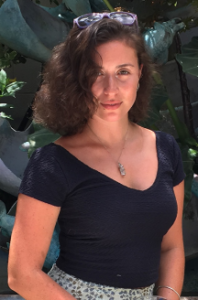
Laura Simson
I attended the Reporting workshop and here are my takeaways:
- Everyone is confused about reporting, and sometimes reporting systems do things that don’t make complete sense, so you should never feel like you have questions that are too silly to ask.
- EAR provides a premade handy summary of the top 25 reviewers in the journal so you don’t need to spend time creating a report of your best reviewers.
- I learned lots of tips for formatting and organizing cells in Excel and that my go-to practice of Googling how to do things in Excel is actually encouraged!
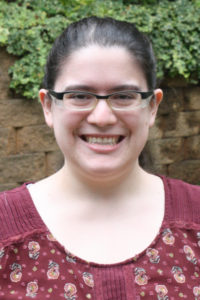
Nicole Aronis
Tips:
Arrive and park early: the parking garage may or may not have the worst signage you’ve ever seen so you’ll have to move your car three times.
Go to breakfast, even if it’s early. At breakfast, most everyone is a little drowsy and travel-lagged, but they’re also eager to meet folks. You won’t have been burned out from a bunch of panels and no one knows where to sit yet. I met a bunch of folks just because they sat with me and it was nice to hear everyone introduce themselves and talk about how they came to the conference.
Small talk is your friend, even if you hate that friend. It isn’t really as awkward as it sounds in your head and everyone is doing it and everyone else is nervous too.
The ISMTE conference was the exception to this rule (everyone loved how much food there was), but… bring a snack just in case.
Attend as many panels as you can, especially the ones that aren’t totally in line with what you do day-to-day. You’ll get a more well-rounded experience and great insight into the industry at large.
Favorite Sessions:
- Keynote with Brian Nosek for the Center for Open Science
- A really fascinating look into improving collaboration and coordination between researchers, funders, institutions, and publishers. (I followed him on Twitter during the talk.)
- Innovation Session
- Essentially a pitch session for upcoming technologies available for scholarly publishing—the AI and citation analysis software were amazing.
- Plenary on Demystifying Buzzwords: AI and Blockchain
- I guess I really liked all the AI sessions, but these were more focused on reviewer availability and what’s coming down the line for ScholarOne.
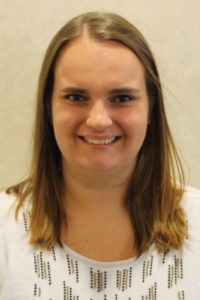
Julia Boyle
This was my first time attending a conference through J&J and it was a great experience. Aside from all of the content in the sessions I attended, I got to chit chat with a contact for a project I used to work on and see face-to-face some bigger names in the industry.
A few of my favorite sessions were (1) the Keynote (Open Research and the Evolving Landscape of Scholarly Communication), (2) Creating a Roadmap for Your Career Development, (3) the Editorial Manager breakout session, (4) the Plan S Point-Counterpoint plenary session, and (5) a session titled Innovations in Visual Content: Enrichment Beyond the Article of Record.
My takeaways that I’d like to share with everyone are:
Some key questions posed in the career development session:
- Strengths: what am I best at?
- Preferences: where does it matter to me to have control?
- Gaps: what do I know I can’t do?
These help you think about future steps and guide your decision-making too!
Some ideas and practices for scholarly communication outside of the article itself:
- Infographics
- Video summaries
- Podcasts
- Plain-language summaries
Each of these have different variants that can be customized as needed to enhance communication and ensure scholarly research reaches a wider base. The Director of Editorial Operations of the New England Journal of Medicine (ever heard of it?) spoke in this session; they have an entire in-house team dedicated to putting out art/video work for their articles. We also heard from a medical illustrator about the philosophy behind medical illustration (going from understanding to portraying) which was super insightful.

Michael Casp
I enjoyed the Plan S session with Rick and Micah. It was honestly the best Plan S session I’ve seen, and I’ve seen quite a few. The format of two voices arguing for and against Plan S helped both highlight the benefits and possible paths for a kind of Plan S in the United States, as well as explain the drawbacks and roadblocks of shifting everything to open access. This session did a great job of communicating the complicated road for Plan S and widespread funder-mandated open access.
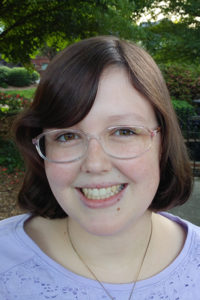
Chloe Lackey
The reporting pre-conference workshop was very enlightening! The presenters went over best practices, discussed reporting in different systems, and ended with reviewing more complex organizational techniques for data in reports in Excel. I only work in ScholarOne currently, so it was interesting to learn about other systems’ reporting functionalities and it made me want to try them out. I also appreciated the comfortable atmosphere of the workshop—the presenters were very open to answering questions and peppered jokes into their talks, so the room wasn’t tense like I initially expected. Sarah Forgeng’s presentation on optimizing data in Excel was my favorite. I learned about a lot of useful Excel functionalities I wasn’t aware of and I look forward to incorporating in the future!
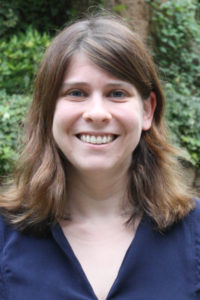
Sarah Wolper
I only attended the reporting workshop, so my feedback is limited to that. I enjoyed Sarah Forgeng’s presentation on ScholarOne reporting because that’s the system I use most frequently. A lot of what she said was intuitive but worth repeating, and a good deal was intuitive but somehow I had never really considered. I particularly appreciated her points about making sure that everything on reports is neatly labeled and presented attractively. When I run reports, I typically just take what the system has spit out and then send it along with minimal editing. But, with a little extra work and finagling, you can make them that much more helpful. Food for thought!
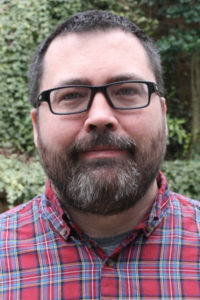
Craig Lincoln
ISMTE 2019 came like a whirlwind, both days moving by so quickly with so many great insights that I barely had enough time to process it all. It was local to us this year, so it was a nice change of pace to be able to drive in for the conference. The nice thing about ISMTE is getting to know other people from the field and sharing insights on how to do our jobs better (as well as share complaints about common pain points!).
My favorite session this year was on image manipulation. Steve Tronick of Enago kicked things off with a history of image manipulation, what it is, and ways to inform authors about it, as well as some tools used to detect it. After his introduction, Christina Bennett from the American Physiological Society took us through a hands-on demonstration on how she detects image fraud using Photoshop. She explained it’s about pattern recognition, and, like self-plagiarism, often the author doesn’t know what they are doing is fraudulent. They often are simply trying to improve the looks of the image, not realizing how their adjustments impact the data presented in their image. This session helped me grasp a subject I wasn’t familiar with and also showed me how to go about investigating possible image manipulation.
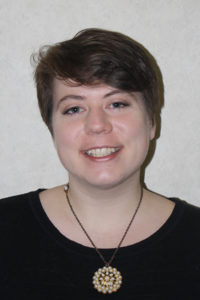
Sarah Hammond
With the scholarly publishing industry expanding its scope of technical possibility and goals for the future, all stakeholders are also realizing we need to narrow in on what the industry’s values are and what we are doing to uphold them. While the keynote and plenary sessions presented on topics such as Plan S, open science, and new publishing models, the workshops and breakout sessions presented ways for us to uphold these big goals. For example, current issues with reproducibility in scientific research call for more transparency in the research process, possibly even a reimagination of when peer review should take place in the publication process. To make research available for critique at an earlier stage, many in scholarly publishing have suggested that researchers should post more preprints and register their studies. In response, companies such as Research Square are endeavoring to offer authors more benefits to posting preprints—such as language editing, video services, and better viewing and downloading of text and figures—through their own preprint platform, which they presented in a session on innovations by vendors.
I was excited by big-picture discussions like the ones about Plan S or diversity in scholarly publishing (including in the editorial office), but the session I found most helpful was the Roundtable Discussion on Improving Editorial Office Management. Many of our journals are growing, and J&J is growing alongside them. With these changes come all the challenges of growth—designing an efficient workflow, training new staff, keeping documentation current and consistent, etc. It can be intimidating to dive into the small details of a big project, but in this session, I was able to hear from those with more experience about their favorite tools, tricks, and approaches for those crucial details.
